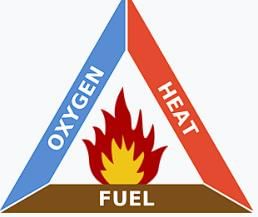Class 8 Exam > Class 8 Tests > Science Class 8 > Test: Combustion & Flame- 1 - Class 8 MCQ
Test: Combustion & Flame- 1 - Class 8 MCQ
Test Description
10 Questions MCQ Test Science Class 8 - Test: Combustion & Flame- 1
Test: Combustion & Flame- 1 for Class 8 2025 is part of Science Class 8 preparation. The Test: Combustion & Flame- 1 questions and answers have been
prepared according to the Class 8 exam syllabus.The Test: Combustion & Flame- 1 MCQs are made for Class 8 2025 Exam. Find important
definitions, questions, notes, meanings, examples, exercises, MCQs and online tests for Test: Combustion & Flame- 1 below.
Solutions of Test: Combustion & Flame- 1 questions in English are available as part of our Science Class 8 for Class 8 & Test: Combustion & Flame- 1 solutions in
Hindi for Science Class 8 course. Download more important topics, notes, lectures and mock
test series for Class 8 Exam by signing up for free. Attempt Test: Combustion & Flame- 1 | 10 questions in 10 minutes | Mock test for Class 8 preparation | Free important questions MCQ to study Science Class 8 for Class 8 Exam | Download free PDF with solutions
Detailed Solution for Test: Combustion & Flame- 1 - Question 1
Test: Combustion & Flame- 1 - Question 2
The calorific value of a fuel is expressed in a unit called _____________.
Detailed Solution for Test: Combustion & Flame- 1 - Question 2
Test: Combustion & Flame- 1 - Question 3
Which of the following substances can be removed to control fire?
Detailed Solution for Test: Combustion & Flame- 1 - Question 3
Detailed Solution for Test: Combustion & Flame- 1 - Question 4
Test: Combustion & Flame- 1 - Question 5
State whether the following statement is True or False
The flame of a candle is non-luminous.
Detailed Solution for Test: Combustion & Flame- 1 - Question 5
Test: Combustion & Flame- 1 - Question 6
Amount of heat energy produced on complete combustion of 1kg of fuel is called :
Detailed Solution for Test: Combustion & Flame- 1 - Question 6
Test: Combustion & Flame- 1 - Question 7
Lowest temperature at which a substance catches fire is called its :
Detailed Solution for Test: Combustion & Flame- 1 - Question 7
Detailed Solution for Test: Combustion & Flame- 1 - Question 8
Test: Combustion & Flame- 1 - Question 9
Why does paper by itself catch fire easily while a piece of paper wrapped around an aluminium pipe does not?
Detailed Solution for Test: Combustion & Flame- 1 - Question 9
Test: Combustion & Flame- 1 - Question 10
What are the three essential requirements for producing fire?
Detailed Solution for Test: Combustion & Flame- 1 - Question 10
|
90 videos|415 docs|44 tests
|
Information about Test: Combustion & Flame- 1 Page
In this test you can find the Exam questions for Test: Combustion & Flame- 1 solved & explained in the simplest way possible.
Besides giving Questions and answers for Test: Combustion & Flame- 1, EduRev gives you an ample number of Online tests for practice















